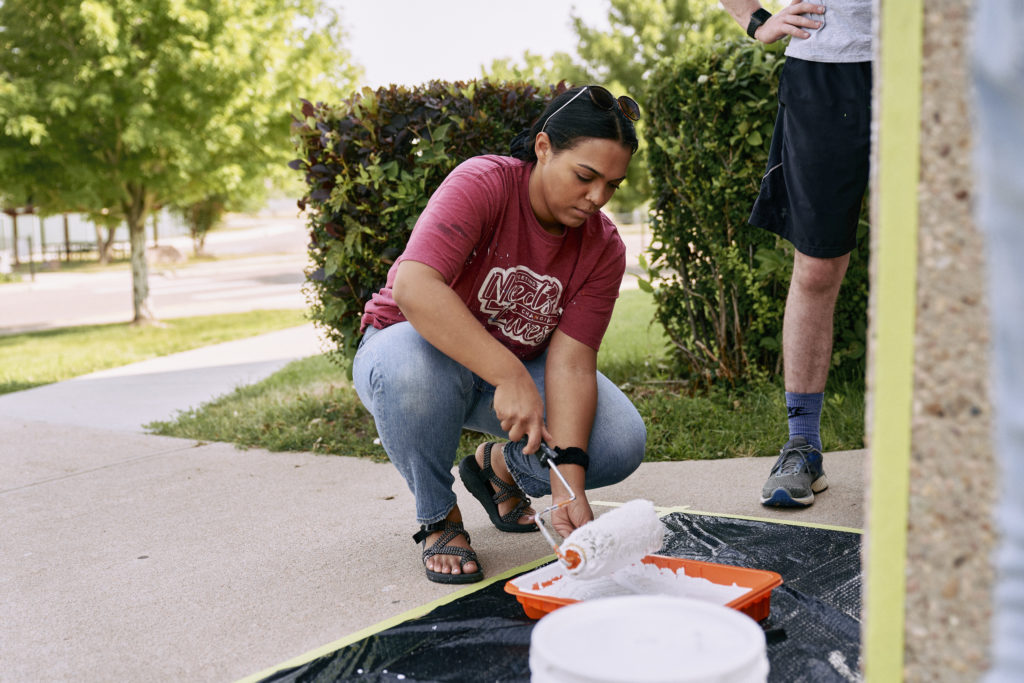You’ve recruited a team and constructed a plan to start a college ministry through your church to engage the campus. Now, what is your next step? Keeping the big picture of reaching the lost and making disciples at the forefront of discussion, you’ll need to build out and fine-tune your one-year college ministry plan. As you draft this plan, begin by designing a weekly rhythm.
On a weekly basis, the ministry leader and members on the collegiate team will need to invest in weekly activities. Not everyone needs to be involved in everything, but at a minimum for college ministry to work well plan to spend time on the four following activities:
1. Spend time in prayer for students.
It may go without saying, but we don’t want to miss this essential, most valuable part (MVP) of your weekly ministry rhythm to the campus. If you want to reach the campus, pray for the campus. If you want to see college students follow Jesus, pray for students to follow Jesus. If you want to activate the greatest resource you have available to you are building a successful, thriving and vibrant college ministry, ask God with fervency and regularity to build his Kingdom among souls on campus. Ask Him to use you, your team and your church according to His purposes and for His glory to do it. If you miss praying for the campus, you will miss reaching the campus. If you fail at everything else, don’t fail to pray for God’s activity to precede and supersede your ministry.
2. Spend time with leaders around campus.
It will take some creativity, but find ways to interact with leaders (believers and unbelievers alike) withinthe university setting. Lead your team (by example) to begin spending time students, staff, faculty and/or administration in everyday activities (meals, volunteer projects, sports events, tutoring, etc.) on or near the campus. Relationships are key to ministry, and proximity precedes relationship. If you want to reach a campus, begin to immerse yourself and your time in the university context. See Jeff Vanderstelt’s book Saturate on aligning daily rhythms to the mission field you want to reach.
3. Spend time in disciple-making huddles.
College leaders tend to focus a majority of their time in one-on-one disciple making, specifically, meeting with students individually to train, mentor and guide (disciple) a student into a deeper relationship with Christ. While this process is good, discipling moments are often best done in huddles (with 2-6 people) where learning can be shared and spiritual challenge and accountability can take place. You and your leadership team need to begin early on spending time learning and applying Scripture with students. By doing huddles, students will see leaders model behaviors that they can in turn and in time use to disciple others in groups as well.
4. Spend time in corporate worship with students.
It may take time—especially if you are engaging lost students—but as soon as possible, begin bringing students from your campus into your weekly, church gatherings. Why? Because the sooner students begin to see the bride of Christ gathered, the better it will be for their long-term development as disciples. Be careful, however, not to drift into the two ditches connected to college students and worship gatherings. Ditch #1: Some college leaders are reticent about bringing their students to worship gatherings because they are afraid of what they will see, observe or experience. This ditch is ugly. Ditch #2: Some pastors are more concerned with having college students attending service (to increase worship numbers) than about seeing students become fruit-bearing multiplying disciples. If you are in either ditch or are drifting toward one now, find a way to fix it. A strong and growing relationship between your college students and your gathered church body is vital to the health of your church.
Once you get a weekly rhythm in place, you’ll see students engage in your ministry. If you want to see your college ministry move to the next level, however, you’ll need to introduce an accelerant. These come in the form of catalytic events in the fall and spring semester. The next two articles in this series will simple examples of both.
If you like what you’ve read today, consider reading the following books:
- Saturate: Being Disciples of Jesus in the Everyday Stuff of Life by Jeff Vanderstelt
- College Ministry in a Post-Christian Culture by Steve Lutz
- The Fuel and the Flame by Steve Shadrach
- The Defining Decade by Meg Jay
For other insights on engaging, disciple making and church planting with college and university students, check out www.collegiatecollective.com or join the Collegiate Collective Facebook group to connect with others engaging the campus with the gospel.
Published July 25, 2017



